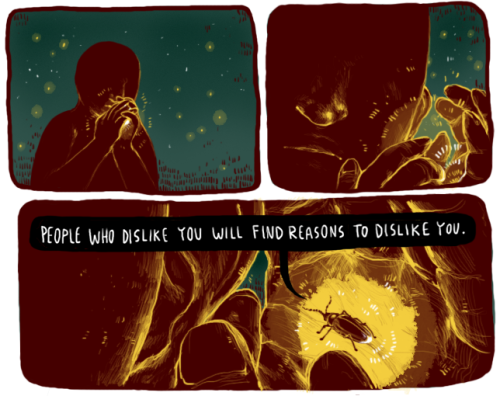What’s Inside A ‘Dead’ Star?
What’s Inside a ‘Dead’ Star?
Matter makes up all the stuff we can see in the universe, from pencils to people to planets. But there’s still a lot we don’t understand about it! For example: How does matter work when it’s about to become a black hole? We can’t learn anything about matter after it becomes a black hole, because it’s hidden behind the event horizon, the point of no return. So we turn to something we can study – the incredibly dense matter inside a neutron star, the leftover of an exploded massive star that wasn’t quite big enough to turn into a black hole.

Our Neutron star Interior Composition Explorer, or NICER, is an X-ray telescope perched on the International Space Station. NICER was designed to study and measure the sizes and masses of neutron stars to help us learn more about what might be going on in their mysterious cores.

When a star many times the mass of our Sun runs out of fuel, it collapses under its own weight and then bursts into a supernova. What’s left behind depends on the star’s initial mass. Heavier stars (around 25 times the Sun’s mass or more) leave behind black holes. Lighter ones (between about eight and 25 times the Sun’s mass) leave behind neutron stars.

Neutron stars pack more mass than the Sun into a sphere about as wide as New York City’s Manhattan Island is long. Just one teaspoon of neutron star matter would weigh as much as Mount Everest, the highest mountain on Earth!

These objects have a lot of cool physics going on. They can spin faster than blender blades, and they have powerful magnetic fields. In fact, neutron stars are the strongest magnets in the universe! The magnetic fields can rip particles off the star’s surface and then smack them down on another part of the star. The constant bombardment creates hot spots at the magnetic poles. When the star rotates, the hot spots swing in and out of our view like the beams of a lighthouse.

Neutron stars are so dense that they warp nearby space-time, like a bowling ball resting on a trampoline. The warping effect is so strong that it can redirect light from the star’s far side into our view. This has the odd effect of making the star look bigger than it really is!

NICER uses all the cool physics happening on and around neutron stars to learn more about what’s happening inside the star, where matter lingers on the threshold of becoming a black hole. (We should mention that NICER also studies black holes!)

Scientists think neutron stars are layered a bit like a golf ball. At the surface, there’s a really thin (just a couple centimeters high) atmosphere of hydrogen or helium. In the outer core, atoms have broken down into their building blocks – protons, neutrons, and electrons – and the immense pressure has squished most of the protons and electrons together to form a sea of mostly neutrons.
But what’s going on in the inner core? Physicists have lots of theories. In some traditional models, scientists suggested the stars were neutrons all the way down. Others proposed that neutrons break down into their own building blocks, called quarks. And then some suggest that those quarks could recombine to form new types of particles that aren’t neutrons!

NICER is helping us figure things out by measuring the sizes and masses of neutron stars. Scientists use those numbers to calculate the stars’ density, which tells us how squeezable matter is!
Let’s say you have what scientists think of as a typical neutron star, one weighing about 1.4 times the Sun’s mass. If you measure the size of the star, and it’s big, then that might mean it contains more whole neutrons. If instead it’s small, then that might mean the neutrons have broken down into quarks. The tinier pieces can be packed together more tightly.

NICER has now measured the sizes of two neutron stars, called PSR J0030+0451 and PSR J0740+6620, or J0030 and J0740 for short.
J0030 is about 1.4 times the Sun’s mass and 16 miles across. (It also taught us that neutron star hot spots might not always be where we thought.) J0740 is about 2.1 times the Sun’s mass and is also about 16 miles across. So J0740 has about 50% more mass than J0030 but is about the same size! Which tells us that the matter in neutron stars is less squeezable than some scientists predicted. (Remember, some physicists suggest that the added mass would crush all the neutrons and make a smaller star.) And J0740’s mass and size together challenge models where the star is neutrons all the way down.

So what’s in the heart of a neutron star? We’re still not sure. Scientists will have to use NICER’s observations to develop new models, perhaps where the cores of neutron stars contain a mix of both neutrons and weirder matter, like quarks. We’ll have to keep measuring neutron stars to learn more!
Keep up with other exciting announcements about our universe by following NASA Universe on Twitter and Facebook.
Make sure to follow us on Tumblr for your regular dose of space: http://nasa.tumblr.com.
More Posts from Pandora-allan and Others
“Similarly problematic is baseline resetting. With chronic sleep restriction over months or years, an individual will actually acclimate to their impaired performance, lower alertness, and reduced energy levels. That low-level exhaustion becomes their accepted norm, or baseline. Individuals fail to recognize how their perennial state of sleep deficiency has come to compromise their mental aptitude and physical vitality, including the slow accumulation of ill health.”
— Matthew Walker, Why We Sleep: Unlocking the Power of Sleep and Dreams





Big #mood

I mean, if I was a demigod and a hot bad boy with a scar on his face making him look all tough and offering vengeance on my shit parents asked me to join the dark side, I wouldve tweeted myself over to the Princess Andromeda. Just saying
Everyone else to me:

I'm aware


can we make it better? ‘cause I’m losing hope James Bay - Us
You can't go back and change the beginning but you can start where you are and change the ending.
— C.S. Lewis
flaviomoraesfoto
Um filhote de Gavião-de-penacho | Spizaetus ornatus
um dos bichos mais magníficos do Brasil, está ameaçado principalmente na nossa Mata-Atlântica justamente por precisar de florestas com alto grau de conservação ou pouco alteradas pelo homem, esse video foi feito em Eldorado/SP em 2018, irônicamente terra onde nosso ilustre presidente foi criado.
Eu fiquei emocionado quando vi esse filhote crescendo na natureza, compartilho na esperança que uma imagem como essa nos sensibilize para o cuidado com nossa biodiversidade.
Obrigado Maicon e Duco pelo trabalho
_______________________________________ _ A young Ornate hawk-eagle | Spizaetus ornatus
one of the most magnificent animals in Brazil, is threatened mainly in our Atlantic Forest precisely because it needs forests with a high degree of conservation or little altered by man, this video was made in Eldorado / SP in 2018, ironically land where our illustrious president was created.
I was thrilled when I saw this young animal growing in the wild, hoping that such an image will make us aware of our biodiversity care.
Thanks Maicon and Duco for the work.

Porthcaw - England (by Tony Armstrong-Sly)
Upper Kings Creek Meadow by Dan Gildor
Via Flickr
Passing the parking lot for the Lassen Peak Trail–and not quite having the five hours (or knees) that it would take to hike to the summit as I’ve done twice before, we started our descent with wonderful views of the park.
Near the Kings Creek campground, Kings Creek meanders through Upper Kings Creek Meadow, offering one last photographic opportunity before it was time to head to Old Station for the night.
-
 annita898ol6gmh liked this · 6 months ago
annita898ol6gmh liked this · 6 months ago -
 spira---mirabilis reblogged this · 9 months ago
spira---mirabilis reblogged this · 9 months ago -
 spira---mirabilis liked this · 9 months ago
spira---mirabilis liked this · 9 months ago -
 blackholesunshineandrainbows liked this · 1 year ago
blackholesunshineandrainbows liked this · 1 year ago -
 setphaserstosquee liked this · 1 year ago
setphaserstosquee liked this · 1 year ago -
 odinsblog liked this · 1 year ago
odinsblog liked this · 1 year ago -
 restjacknwidces liked this · 1 year ago
restjacknwidces liked this · 1 year ago -
 fading-killer liked this · 1 year ago
fading-killer liked this · 1 year ago -
 serah-e-nerd liked this · 1 year ago
serah-e-nerd liked this · 1 year ago -
 demond-meets-evil liked this · 1 year ago
demond-meets-evil liked this · 1 year ago -
 will0waesthetic liked this · 1 year ago
will0waesthetic liked this · 1 year ago -
 ridazzle reblogged this · 2 years ago
ridazzle reblogged this · 2 years ago -
 mona-vainy reblogged this · 2 years ago
mona-vainy reblogged this · 2 years ago -
 mona-vainy liked this · 2 years ago
mona-vainy liked this · 2 years ago -
 bbc-s liked this · 2 years ago
bbc-s liked this · 2 years ago -
 ridazzle liked this · 2 years ago
ridazzle liked this · 2 years ago -
 russianobserber1 liked this · 2 years ago
russianobserber1 liked this · 2 years ago -
 abyssus-abyssum-invocat-m-d liked this · 2 years ago
abyssus-abyssum-invocat-m-d liked this · 2 years ago -
 deadbilly reblogged this · 2 years ago
deadbilly reblogged this · 2 years ago -
 voidexiia liked this · 2 years ago
voidexiia liked this · 2 years ago -
 scareprinter reblogged this · 2 years ago
scareprinter reblogged this · 2 years ago -
 jjgaut liked this · 2 years ago
jjgaut liked this · 2 years ago -
 doniddb-blog liked this · 2 years ago
doniddb-blog liked this · 2 years ago -
 flying-wolf-32 liked this · 2 years ago
flying-wolf-32 liked this · 2 years ago -
 nimzay1dstar reblogged this · 2 years ago
nimzay1dstar reblogged this · 2 years ago -
 ilovestudying555 reblogged this · 2 years ago
ilovestudying555 reblogged this · 2 years ago -
 ilovestudying555 liked this · 2 years ago
ilovestudying555 liked this · 2 years ago -
 wannabeajedi liked this · 3 years ago
wannabeajedi liked this · 3 years ago -
 crimson-miz liked this · 3 years ago
crimson-miz liked this · 3 years ago -
 jinglejangle101 liked this · 3 years ago
jinglejangle101 liked this · 3 years ago -
 kitchen-light liked this · 3 years ago
kitchen-light liked this · 3 years ago

Life is too short. that's it😋 "My past unshapely natural stage was the best... With just one flower flaming through my breast..."
155 posts



